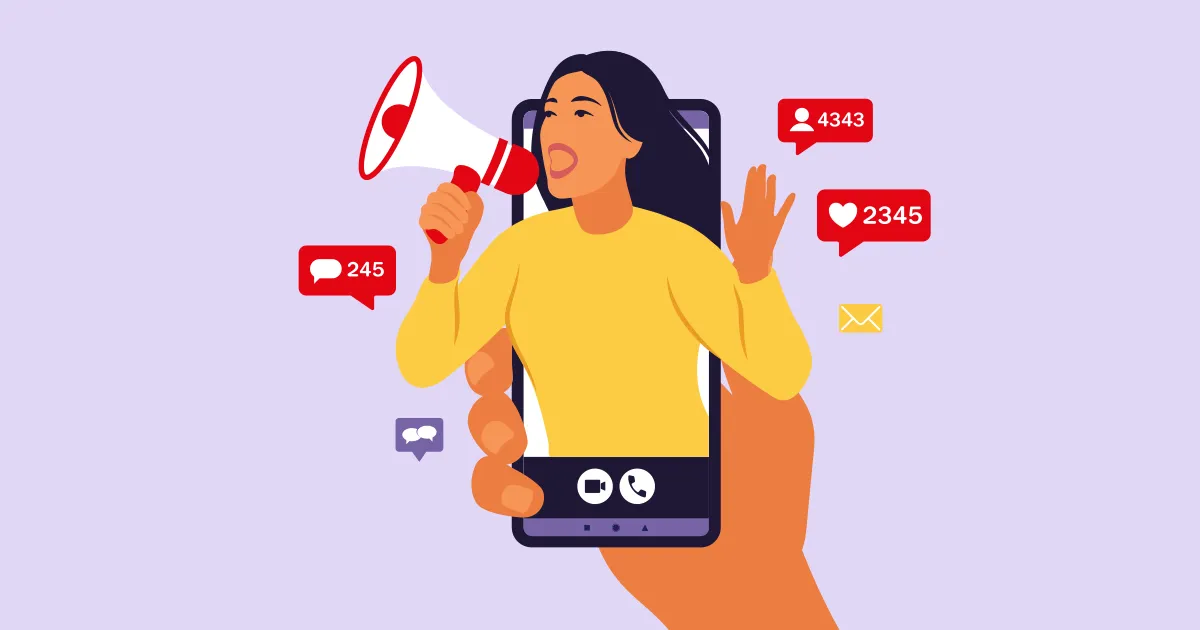
2023: A Year to Capitalize on Emotionally Driven Customer Loyalty
The speed at which the customer loyalty landscape continues to evolve is startling. Yet too many companies are still relying on legacy systems that are limited, expensive and unable to easily adapt to handle these coming changes. The outdated strategies are much too basic for today’s complex consumer.
The reality is these brands will face an uphill battle in the years to come—unless they start preparing now. External pressures continue to mount, and fast. Economic downturns, rising inflation, data privacy regulations, heightening consumer expectations and a host of other factors are all unfolding, and all completely outside of our control. There’s so much we can dictate—our willingness to lead with growing trends, how we leverage data to understand our consumers, and the systems and strategies we deploy to future-proof our businesses.
2023 marks a pivotal turning point because the opportunity to jump ahead of both the competition and the consumer is more palpable than ever. Technology is a gift that enables this potential, and frankly, power.
To help you prepare, we’ve unveiled 11 of the most prominent loyalty trends you need to know in 2023 and predictions for the future as discovered via original research plus interviews with some of the most forward-thinking experts in the industry. In this guide, you’ll learn about:
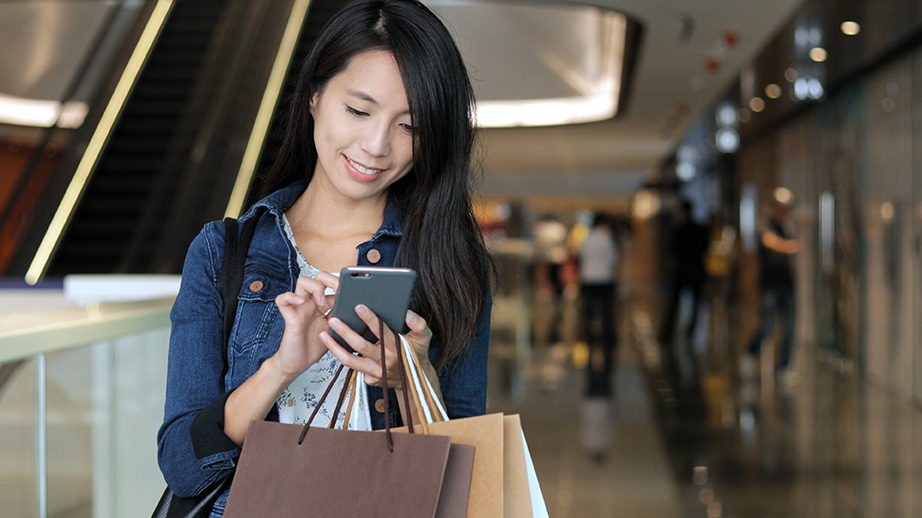
Building emotional loyalty between brands and customers continues to increase in importance. We’re seeing more brands build engagement strategies into their programs to connect with customers throughout the customer journey. 33% of consumers will abandon a brand that fails to create a sense of personalization (Accenture). Tailoring your offering based on what’s important to customers shows that you value and understand them and creates the necessary emotional connection.

“Brands that can create emotional connections with their customers and members will thrive. Rational benefits are still very important, but people need to feel connected to the brands they are loyal to. This can be done through experiences, alignment of interest, influencers, charity, service, etc., but it must be relevant and valuable,” shares Tom Peace, Managing Director of The Loyalty People.
Today’s consumers are demanding and savvy. They understand that organizations have their data and in exchange, consumers are expecting more personalized experiences. They’re looking for brands that understand their needs and values, respond to them accordingly, and make them feel seen and appreciated.
“I think if you can get someone really engaged with you, they’ll hold up their hand to say, “I’m a member.” To get that, you have to know what’s important to them. You need to listen to be relevant.”
Sandra Gudat, Customer.com
“I think if you can get someone really engaged with you, they’ll hold up their hand to say, “I’m a member.” To get that, you have to know what’s important to them. You need to listen to be relevant.”
Creating emotional loyalty with your customers is a powerful asset. “I think if you can get someone really engaged with you, they’ll hold up their hand to say, ‘I’m a member.’ To get that, you must know what’s important to them. You need to listen to be relevant,” shares Sandra Gudat, CEO of Customer Communications Group. To cultivate this level of connection with customers, companies will need to go beyond providing excellent products or services—they must also demonstrate empathy and support toward their customers by understanding their needs and desires.
“This is more than a trend. It should be a pillar of your loyalty strategy,” said Erin Raese, SVP at Annex Cloud. “As technology continues to evolve and customer expectations grow higher, personalizing to create emotional bonds will be imperative.” Companies need to prioritize developing meaningful connections with their customers if they want to secure a place in the hearts of their audiences and establish themselves as top contenders in the market.
The loyalty landscape has been undergoing a dramatic transformation in recent years. Thanks to advancements in digital technologies, customers are now able to access loyalty programs that offer desirable benefits from anywhere, anytime. As the world continues to move towards an increasingly digital-first mentality, brands must stay ahead of the curve by leveraging innovative approaches to customer loyalty.
Businesses can stay relevant by tapping into the potential of their data. Collecting data from customer interactions and using AI-driven analytics will allow businesses to gain deeper insights into their customers’ behaviors and preferences. This brings a new level of understanding to customer engagement and allows brands to create tailored experiences that are optimized for higher engagement and long-term loyalty.
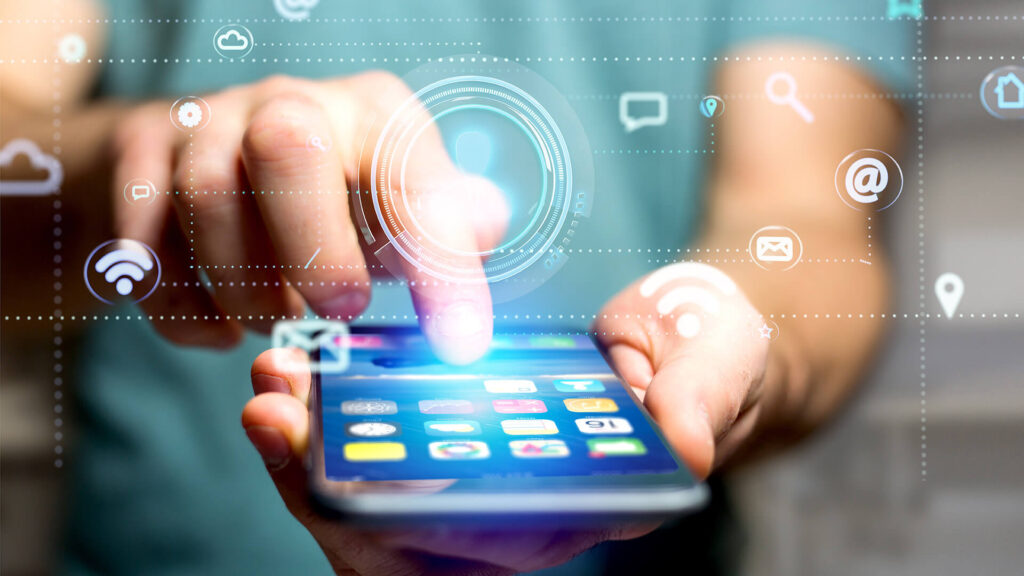
“As consumers become more mobile-focused, it’s essential for businesses to adapt to this shift and offer an omnichannel experience that seamlessly integrates across all devices. A mobile-first strategy not only enhances the customer journey but also fosters loyalty and strengthens the relationship between a brand and its customers.”
Matt Reeves, Vice President of Product Management at Annex Cloud provides perspective: “As consumers become more mobile-focused, it’s essential for businesses to adapt to this shift and offer an omnichannel experience that seamlessly integrates across all devices. A mobile-first strategy not only enhances the customer journey but also fosters loyalty and strengthens the relationship between a brand and its customers.”
The rise of mobile platforms has also had a major impact on how loyalty programs function. From mobile applications that allow customers to check their points balance or redeem rewards on the go, to push notifications that remind customers of special events or offers, mobile technology has enabled brands to reach out directly with hyper-personalized messages to engage with their loyalty customers in real time.
It’s clear that the digital transformation in loyalty brings huge opportunities for improved customer journeys through more efficient reward systems and more personalized experiences. Staying ahead of the curve could be the key to ensuring long-term success.
For many years now, partnerships have been on the loyalty trend list. However, it’s arguable that we really haven’t seen it take off. There are many benefits to partnerships—from extending your marketing budget to extending your brand further into a customer’s daily life. The experts we spoke with continue to be bullish on this strategy.
“Partnerships are the new accelerator to delivering value to members across the spectrum of member segments.”
David Slavick, Co-founder & Partner, Ascendant Loyalty Marketing
Partnerships between companies, when done well, bring massive advantages for both parties, creating more diverse experiences and rewarding the customers of both brands. By leveraging each other’s resources, businesses will be able to offer a greater variety of experiences that draw in customers with different preferences and create connections to both brands.
Marc Steiner, Co-founder & Partner at Cyrca Strategy, shares that, “Loyalty programs will turn to partnerships to boost perceived value and improve their member experience. Companies can simultaneously reduce the cost and increase the perceived value of loyalty program benefits and rewards through strategic partnerships. As transactional rewards become table stakes for most program types, differentiation will need to come through benefits and experiences, and a powerful way to provide unexpected value to customers is by partnering with complementary brands.”
More specifically, Jodi Rausch, Managing Director of Integrated Loyalty Solutions at Concentrix Catalyst, points out how brands are leveraging this strategy successfully already. “We continue to see big brands create partnerships which, when done the right way, are very exciting and great for customers members. For example, the ability to connect your ULTA and Target Circle memberships to double dip in both programs is meaningful and very member-friendly.” The main challenge presented by partnerships between companies is accurately tracking and understanding the value of the partnership.

Each company involved in a partnership must recognize its strengths and weaknesses to create a stronger team dynamic. With such an approach, partnerships between companies can offer a greater variety of experiences while creating engagement among brands, ultimately leading to stronger brand loyalty over time.
Erin Raese, SVP, Annex Cloud, states, “Personally, I’ve been a proponent of partnerships for more than 20 years. They offer the tremendous opportunity to extend brand exposure and increase overall brand value. It’s great that brands are opening their eyes to the true potential of partnered programs. The greater trend we see here is the ability to extend your brand outside of your environment into places where your customers spend their time and money. Bringing your brand into their daily lives builds stronger brand loyalty and creates stronger emotional bonds.”
David Slavick, Co-founder & Partner of Ascendant Loyalty Marketing, asks the question, “What will be the newest partnerships that will transform program value propositions, and is this simply a trend or a practice that will be with us for a long time?”
We see the adoption of loyalty in new verticals; most prominently with manufacturers and Fast-moving Consumer Goods (FMCG). This is because loyalty is the perfect way to collect zero- and first-party data with consent.
“With attention to privacy and consent being so important, loyalty programs will become more the medium for collecting data. I see that as a trend more for companies that do a lot of third-party data now. Your best customers want to be heard, so ask your best customers, and they’ll tell you. Reward them for their information,” shares Sandra Gudat, CEO, Customer Communications Group.
“Your best customers want to be heard, so ask your best customers, and they’ll tell you. Reward them for their information.”
Sandra Gudat, CEO, Customer Communications Group
We’ve established that creating emotional loyalty needs to be a pillar of your loyalty strategy. To create that emotional connection, you need to deliver personalized and relevant connections. But how do you do that? How do you collect the data that’s necessary to allow you to personalize beyond a name on an email or item selection based on a previous basket/purchase?
As Jodi Rausch, Managing Director of Integrated Loyalty Solutions at Concentrix Catalyst shares, “This isn’t necessarily a big ‘A-ha,’ but with third-party cookies going away, we will continue to see more brands realize (and act on) the need to capture meaningful customer data on their own. This means better and more personalization for members which is exactly what they’ve been asking for.”
Progressive profiling is one of the newer buzz phrases in our space. While we’ve been doing this for years in a simplistic way, today’s approach to progressive profiling is far more sophisticated. In the past, a customer would join a program with their email. Then, when they logged into their loyalty account, there was the ability to share more information by completing profile information. Today’s progressive profiling is far more fun and engaging. Brands like The North Face are asking their members questions about the outdoor activities they like, their favorite venues for those activities and more.
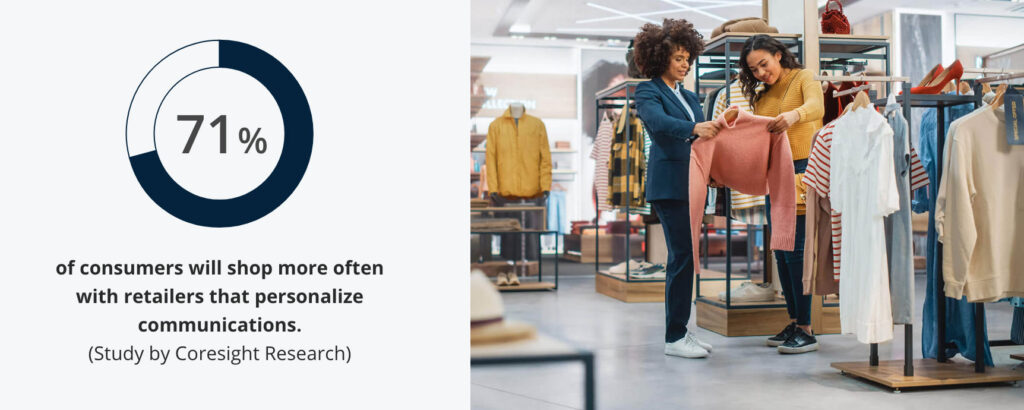
Matt Reeves, Vice President of Product Management, Annex Cloud provides expert insight on data collection saying, “In today’s rapidly evolving digital landscape, privacy and data security are paramount concerns for consumers. As a leader in the consumer loyalty and retention space, it’s our responsibility to prioritize the protection of personal data. This is why we believe in the power of zero-party data and progressive profiling to augment the customer profile. This approach safeguards sensitive information and provides a more nuanced understanding of the customer, enabling us to deliver personalized, value-driven experiences that foster a lifetime of loyalty.”
At the heart of progressive profiling, the customer actively shares their likes, dislikes, plans and dreams with the brand. This information provides loyalty marketers with the valuable insights they need to create truly personal and extremely relevant experiences. Used well, these experiences will create lifelong emotional bonds between customer and brand.
Loyalty programs should be tailored to speak to its customer base and, now more than ever, brands have the responsibility to drive change and do good in the communities they serve.
Marc Steiner’s insight into how customers are attracted to brands that share their personal values and help express their identity is supported by Julian Drees’ observation that newer generations are seeking out experiences that reflect their values, whether that be reducing plastic use or something else entirely.
“Newer generations are living in a world of social media ‘show and shine’ and at the same time caring about the world’s ecosystem,” states Julian Drees, Associate Partner, KPS AG. “The new generation seeks for experience to escape their “blursday”, social media competitions, gamifications paired with sustainability will become an important topic for brands and their loyalty programs.”
“When customers feel that a brand shares their own values or helps express their personal identity, they have a natural affinity for their fellow fans of the brand. Loyalty programs are increasingly looking to help nurture brand-communities and amplify the voices of their biggest fans to create a sense of belonging and meaning.”
Marc Steiner, Co-founder & Partner, Cyrca Strategy
Jodi Rausch, Managing Director of Integrated Loyalty Solutions at Concentrix Catalyst explains how loyalty programs are now recognizing this by offering charitable donations or bonus points for sustainable purchases, displaying a commitment to social responsibility from brands: “More programs will incorporate and reward social responsibility. Charitable donations, bonus points for purchasing sustainable products, etc. For years, various programs have offered charitable donations in exchange for points, but it finally feels like members are actually taking advantage of it.” These developments are helping to create a sense of belonging and meaning for customers, enabling them to have an affinity with their fellow fans of the same brand.
“Similarly, customers and members have made it clear they want their favorite brands to embrace corporate responsibility (especially around social justice and environmental issues). By incorporating both donation opportunities (especially when matched!) and bonusing members for selecting environmentally conscious products, brands can highlight their mission and their commitment to these causes.”
Marks & Spencer donates to charities such as Cool Earth, The Marine Protection Society and others every time a customer purchases from the brand. By engaging in charitable activities and donating a portion of their profits to causes that benefit society, Marks & Spencer demonstrates it’s dedicated to corporate responsibility and social justice causes. At the same time, the company incentivizes its customers to make more conscious shopping decisions, further promoting its commitment to a better future.

Proctor & Gamble offers its loyalty customers the opportunity to exchange valuable engagements for charitable donations. For example, a customer can fill out a survey or scan their proof of purchase for points that can be exchanged for beneficial rewards. P&G will then automatically donate to the cause of their customer’s choosing.
When a loyalty program aligns itself with driving change, brands can create stronger connections between themselves and their customers. Not only do these programs incentivize repeat customers, but they also provide a platform for businesses to support causes that reflect customer values and preferences.
Fred Reichheld has been directing us toward the importance of advocacy since he introduced the NPS score. In his book, Winning on Purpose, he focused on taking the equation for the value of a customer from transaction value to the total value they bring, including all of the people they refer.
At Annex Cloud, where we have a full referral product, we’re also seeing more and more organizations looking to tie advocacy and referrals into their loyalty strategies. From incentivizing members to share hashtags and user-generated content, to proactively referring friends and family, more and more organizations are seeing the value in using existing customers to support new customer acquisition. This is a wise strategy given that 86% of a brand’s best customers will happily refer friends and family. Those who are referred are proven to spend 18% more than customers acquired through other channels.
“Engaged consumers actually want to be advocates for their favorite brands. Why? Because they adopt the brand as part of their personal identity. Loyalty programs can turn members into advocates by providing them with a sense of belonging and exclusivity, then harness that positivity by making it really easy for them to invite family and friends to share in that amazing experience.”
Philip Shelper, CEO & Founder, Loyalty & Reward Co
Consumers are increasingly looking for ways to become more personally involved with the brands they love, from advocating for them to joining loyalty programs that provide a sense of belonging and exclusivity. Philip Shelper, CEO & Founder, Loyalty & Reward Co adds, “Engaged consumers actually want to be advocates for their favorite brands. Why? Because they adopt the brand as part of their personal identity. Loyalty programs can turn members into advocates by providing them with a sense of belonging and exclusivity, then harness that positivity by making it really easy for them to invite family and friends to share in that amazing experience.”
By creating an environment of loyalty and belonging, companies can benefit from customers who actively share their positive experiences with others. Companies can foster this behavior by creating loyalty programs that provide members with a sense of loyalty, belonging and exclusivity.
“Loyalty done right, should naturally create a ripple effect. Happy customers tell others, rippling the brand affinity across their network. As marketers, we all understand this, but it’s hard to quantify,” shares Erin Raese, of Annex Cloud. A referral program tied to your loyalty initiative creates an added value or reason for the customer to bring in others. Plus, this allows the marketer to track these new customers and ultimately the value of the referring customer.

Customer loyalty can’t be measured by spend alone. Truly valuable customers are those who not only spend with a brand, but also exhibit loyalty through self-service or positive sentiments towards a brand by becoming brand advocates. These are the customers that can provide a greater financial benefit long-term versus limited upfront transactional value.
Sandra Gudat, CEO, Customer Communications Group takes this thinking even further: “Loyalty is not just transactions. It’s about the emotional connection. As brands move away from transactional loyalty, I see them moving more towards creating advocates—where people are referring you and are truly invested in your brand. Then they’re not going to be lured away if there happens to be a better price on a particular item somewhere else.”
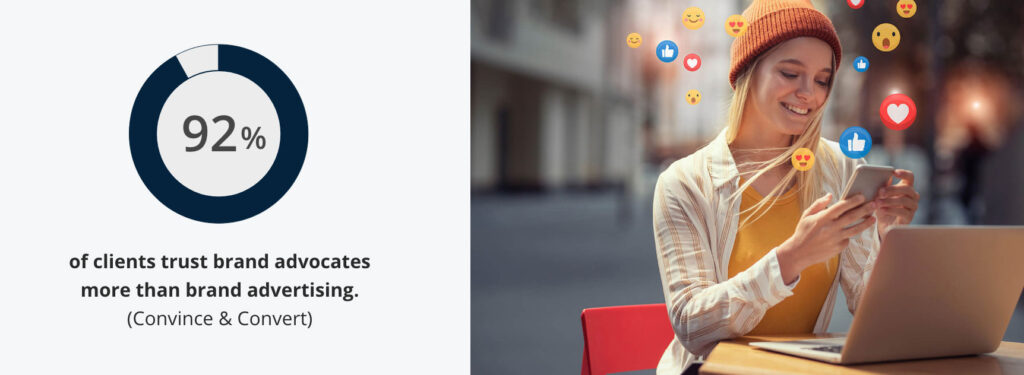
While there are still many programs in the market using points as currency, we’ve been seeing organizations looking to change this up, getting more creative, some even being adamant in their direction: “We don’t want points.” As we dig into this trend, it appears that it’s not that these companies aren’t looking to use a currency to track behaviors, but they don’t want to offer something as generic as points. We see organizations looking to create a currency that’s more closely tied to their brand or to specific activities. In some cases, we’re seeing both.
“I see this as less of ‘a shift away from points’ and more ‘a shift towards providing better value’. There are too many consumers who have engaged with a points program, earned a few points, realized they aren’t worth anything, then disengaged from the program. Points are blamed, but mainly because it is the dominant loyalty program design in society today. 50 years ago, we would be blaming stamps. In truth, it is a lack of value that is the root cause here. Improve the value provided and the engagement will come.”
Philip Shelper, CEO & Founder, Loyalty & Reward Co
For example, if the logo is a horse, that brand would offer horses vs. points. That same company may want to recognize customers for three social shares and uploading of four images. The customer would earn badges for these actions.
Where above we are speaking to personalizing strategies to the consumer, brands are also working hard to make their strategy more personally tied to their brand. We expect to see this shift continue as brands continue to work to differentiate and be more meaningful in the eyes of the customers.
Steve Sickel, Chief Marketing Officer & Managing Partner at The Mallett Group, further simplifies this concept by suggesting, “Experiential Currency—buy my product, and I’ll award you with points currency that you can use for experiences money can’t buy like backstage passes to a concert or a meet & greet with a celebrity.” Tracking customer behavior behind the scenes and then surprising and delighting customers based on their actions is essential to the loyalty experience.

Amanda Cromhout, Founder & CEO of Truth, elaborated on this. “One of my favorite trends for loyalty and CRM is SURPRISE AND DELIGHT. Program operators must use insight and a covert approach to offer their best customers rewards and recognition over and above the core loyalty offering when they are least expecting it. What they actually offer can vary from something as simple as a phone call from the CEO, a free coffee or the innovative use of NFTs.”
The loyalty game is changing, and today’s loyalty programs are now incorporating Web3 and Non-fungible Tokens (NFTs) into their reward offerings.
Starbucks Odyssey is an innovative example of how loyalty programs are leveraging NFTs and the Web3 ecosystem to create immersive and rewarding experiences for their customers. Starbucks not only distributes rewards in the form of NFTs, they also built a digital community around their brand. Brady Brewer, Starbucks Executive Vice President and Chief Marketing Officer, says, “Leveraging Web3 technology will allow our members to access experiences and ownership that was not possible before. Starbucks Odyssey will transcend the foundational benefits that our Starbucks Rewards members have come to love, and unlock digital, physical and experiential benefits that are uniquely Starbucks.”
Leveraging blockchain technology, Starbucks Odyssey is able to offer an engaging and rewarding loyalty experience where customers feel more valued and connected with their brand as a result.
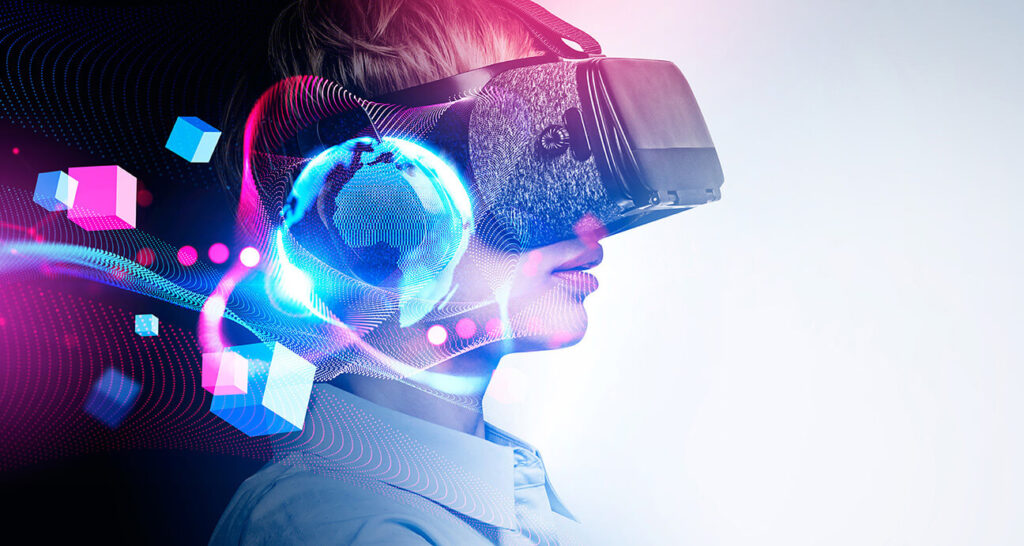
Web3 and NFTs are a memorable way for loyalty providers to reward customers for their loyalty while also creating an exclusive space for brand-loyal customers to interact.
In other cases, loyalty customers can even use their points to unlock exclusive NFTs, providing them with access to an even more personalized and exclusive community centered around those tokens.
“Following the launch of Starbucks’ Odyssey last year, more brands will try to incorporate Web3 (not just NFTs) in their program this year. Despite still being unable to establish a clear value/impact of Web3 in Loyalty, not to mention some spectacularly dodgy incidents in the crypto world (FTX), more brands will continue to marry their loyalty programs with Web3,” advises Henry Christian, Head of Business, Loyalty at GoToGroup.
Web3 and NFTs are a memorable way for loyalty providers to reward customers for their loyalty while also creating an exclusive space for brand-loyal customers to interact.
“Web3 and NFTs are still so new. Our guidance is to test with the right population and learn if it’s the right value for your brand and your customer base. One caution, this is still so new and the process for acquiring is friction filled, be careful who you offer it to, and do your best to ensure a smooth experience as acquiring NFTs can be filled with confusion and friction,” shares Erin Raese SVP of Annex Cloud.
Game mechanics is revolutionizing customer loyalty programs, allowing brands to incentivize their members with carefully orchestrated, cumulative experiences. Today’s technologies allow brands to track and reward consumers for taking specific actions along the customer journey, such as sharing content or completing a survey. As customers progress through a series of gamified actions, they earn greater rewards, badges or status than if they had just made a single purchase action.
Phil Hussey, Principal Consultant at LoyaltyLevers, urges us to look at United Airlines’ MilePlay program for gamification at work, sharing, “Enabled by rich granular data, programs like United Airlines’ MilePlay incentivize members through a very specific set of sequenced actions, such as purchasing certain routes, traveling by certain dates, upgrading a seat, etc., and earn disproportionate rewards as a result.”
“We will see at least a couple of enterprise brands with top agencies come out with exciting and creative gamified loyalty program components. I also expect to see a lot more loyalty cross-promotions involving and targeting gamers.”
Olga Lopategui, Founder of Restaurant
Loyalty Specialists, Ollo
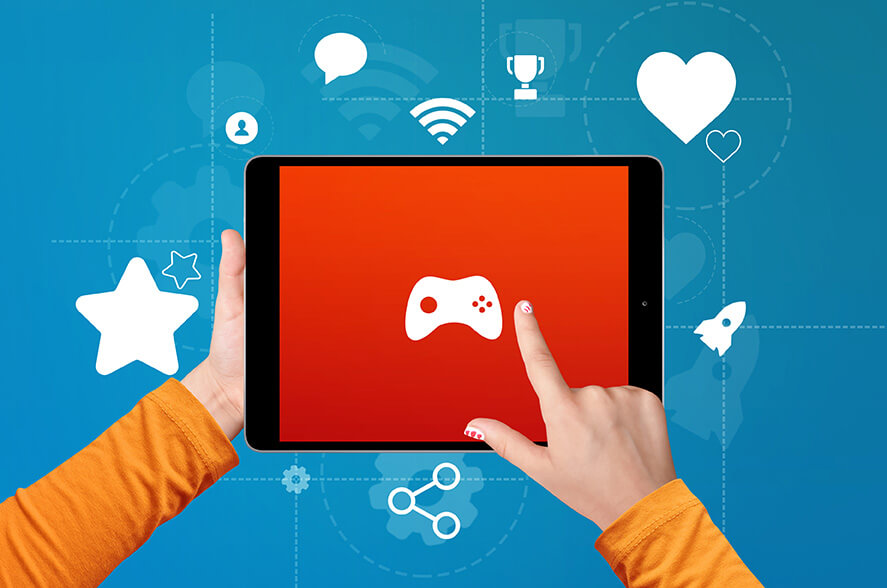
This loyalty trend changes the way customers interact with brands and experience loyalty programs, allowing them to earn loyalty currency in more fun and engaging ways that’s tailored to the individual. As loyalty providers adopt more dynamic customer journeys, programs that incorporate gaming mechanics will become a more popular and effective strategy to drive conversion and repeat customers.
Today, we’re seeing truly gamified experiences and even programs based on playing games as points of interactions with the brand. We see more of this in the European loyalty space. As an example, the KFC Colonel’s Club program in Ireland is based on arcade games.
Restaurant Marketing Expert Olga Lopategui, Founder of Restaurant Loyalty Specialists at Ollo, predicts, “We will see at least a couple of enterprise brands with top agencies come out with exciting and creative gamified loyalty program components. I also expect to see a lot more loyalty cross-promotions involving and targeting gamers.”
Artificial Intelligence (AI) is continuing to emerge as a powerful tool for loyalty programs. In response to consumer demands for hyper-personalized experiences, brands are leveraging AI technologies to cultivate relationships with consumers beyond the norm. Intelligent loyalty solutions use predictive algorithms to track customer behavior and provide relevant rewards in return, while machine learning techniques keep customers engaged on any channel.
“Static to Dynamic. Artificial Intelligence has yet to make a serious impact in the loyalty space, but there are increasing use cases for brands like Starbucks and 7 Eleven. Most of the challenge is data prep, getting the enriched historical data together including all the characteristics of the consumer, the occasion, the offer, messages received, the product itself (which could have 100s of attributes alone) and that same data for all historical purchases relative to the purchase or redemption case. As data scientists assemble the data needed for the enterprise, loyalty will undoubtedly become a primary beneficiary and programs will move from static to dynamic and highly personalized benefits,” shares Phil Hussey, Principal Consultant at LoyaltyLevers.
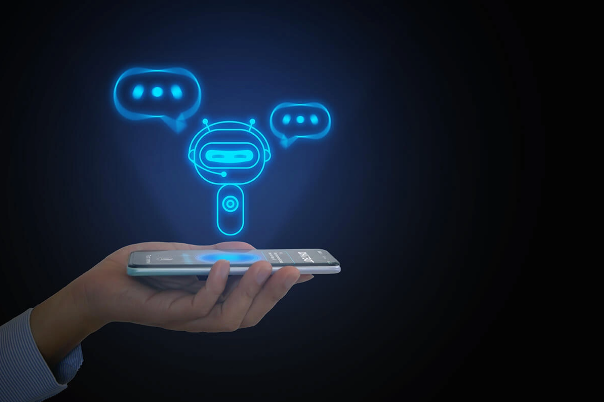
“As data scientists assemble the data needed for the enterprise, loyalty will undoubtedly become a primary beneficiary and programs will move from static to dynamic and highly personalized benefits.”
Phil Hussey, Principal Consultant at LoyaltyLevers
AI technologies allow loyalty program providers to understand what motivates their customers and then use that information to create tailored loyalty offers in real time. “AI is going to continue to be more and more important. Knowing the customer is important—the intent and understanding has been there, but we have not been able to do it because we’ve been limited by manpower. It used to take hours to segment a database for a small retailer with less than 1 million customers. Now, that segmentation is being done in real time by machines. And it’s not a one-time thing. We need to continually iterate and update, making adjustments based on the latest data. AI will allow us to have that data constantly to deliver the proper offers and messages, at scale, that no human would be able to do. That will really change loyalty. We’ll still need to have the people to support that. It won’t run on its own. But the right people with the right tech, that will be a powerful combination,” shares Sandra Gudat, CEO, Customer Communications Group.
AI-driven customer loyalty programs can be an incredibly powerful tool for brands, but just like any modern-day tool, it’s only as good as the data it’s given. AI-driven loyalty relies on accurate customer data to create customer segments and personalized communications.
If the customer information is incomplete, inaccurate or out of date, then it’s impossible to use AI to optimize a customer loyalty program. Businesses must ensure that customer data is accessible, up-to-date and accurate before integrating AI into their loyalty strategy. Soon, AI will be fundamental in loyalty program strategy, enabling brands to boost engagement and loyalty with dependable customer rewards that drive more repeat business than traditional loyalty programs.
Loyalty programs have previously been kept as a silo in organizations and as part of the customer experience. Some brands are still delivering two separate email streams to customers; one for CRM offers and one for loyalty communications.
As loyalty programs continue to become an ever-present part of the customer journey, frictionless loyalty experiences are imperative. Consumers have become accustomed to the convenience of many shopping and purchasing experiences. Loyalty offerings need to be woven into the complete customer experience, and now the expectation is a smooth and personal experience in every step of their customer journey.
Omnichannel shoppers have a 30% higher lifetime value over those who shop using only one channel (Google). Brands that aim to provide an omnichannel loyalty experience will have a major advantage as customers will perceive their brand as a cohesive unit, ensuring greater customer retention and satisfaction.
Sandra Gudat, CEO, Customer Communications Group advises, “We need to meet the customer wherever he or she is, and be able to show up the same way across all channels—technology enables that. Retailers who’ve done well are those who embraced that change.”
“Loyalty needs to be frictionless. Consumer expectations have been accelerated by tech solutions, especially through the pandemic. Members expect a seamless engagement, aligned perfectly across channels, where they are recognized instantly, and every step is frictionless.”
Tom Peace, Managing Director, The Loyalty People
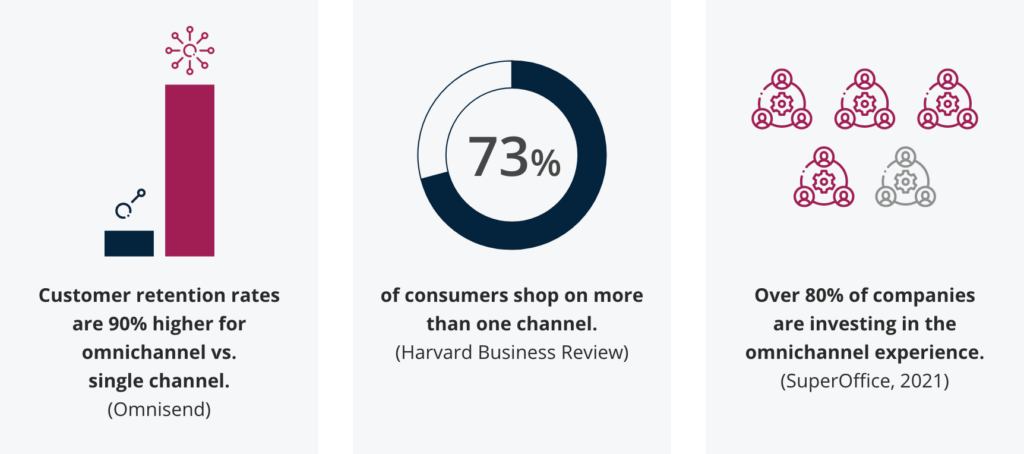

With so many organizations having gone through a digital transformation, some maybe a few times, our technologies are now connected and data is flowing. Adding loyalty programs to the mix will ensure that your organization is collecting first- and zero-party data with consent at scale.
“Brands need to understand the importance of putting all customer touchpoints at the center of their loyalty initiatives. Investing in technology and integrations ensures the loyalty platform becomes the beating heart of all customer touchpoints with your brand. Seamless integrations with critical customer systems like CRM, POS and others ensures that you will have a comprehensive and unified view of the customer journey. This will enable you to deliver personalized, meaningful, and engaging loyalty experiences that will drive retention and build brand loyalty.” says Matt Reeves, Vice President of Product Management, Annex Cloud.
“Omnichannel personalization is so important that we believe it is a critical marker that will define great companies from good over the next decade. Why? Firstly, consumers now expect it and will switch brands if they don’t receive it. Secondly, it requires a high degree of organizational sophistication (technical, strategic and cultural) to execute it. All companies should prioritize moving toward it now or risk being left behind forever.”
Philip Shelper, CEO & Founder, Loyalty & Reward Co.
Companies like TaylorMade are making noteworthy progress in personalized communications and experiences—from personalized product recommendations and exclusive invitations to free personalization on select products. TaylorMade is a brand that has managed to go above and beyond traditional loyalty initiatives. Their efforts have left customers delighted by their individualized loyalty experiences and TaylorMade takes that feedback into account when developing their program to drive long-term engagement.
Using tactics such as progressive profiling, you’ll be able to collect important data points from customers that will allow you to communicate back in a meaningful way. Show your customer that you know them and understand them.
Annex Cloud believes in the necessity for personalization and that organizations are now able to deliver on the promise of personalized, relevant experiences. While it’s easy to say, we fully understand that there are still many challenges facing us in order to execute. That’s why we’re launching the Get Personal with Loyalty podcast. Listen in for tips from experts and insights from brands already moving in this direction.
Customer acquisition is a tricky conundrum that’s not going away any time soon. New customer acquisition costs have increased by almost 50% in the past five years (HubSpot). The cost of customer acquisition is rising as companies are investing more in data, technology and partnerships in order to create better loyalty experiences.
Ray Chelstowski, Director of Agency Partnerships at Annex Cloud, weighs in:
“As inflationary concerns cause major marketers to hit “pause” on many of their advertising initiatives, brands are moving media dollars to platforms that allow them to communicate directly to consumers and deliver performance metrics that demonstrate efficacy and tie back attribution. That’s why loyalty has become a priority for brands and agencies alike.”
“As inflationary concerns cause major marketers to hit “pause” on many of their advertising initiatives, brands are moving media dollars to platforms that allow them to communicate directly to consumers and deliver performance metrics that demonstrate efficacy and tie back attribution. That’s why loyalty has become a priority for brands and agencies alike.”
Ray Chelstowski, Director of Agency Partnerships at Annex Cloud
Traditional advertising methods such as TV and Radio are becoming increasingly less effective, forcing companies to look for alternatives. This has resulted in a shift towards platforms that enable direct communication with customers such as social media, chatbots and emails.
These platforms allow companies to create personalized engagement experiences with their customers allowing them to build more meaningful relationships and make better use of their resources.
Looking ahead to next year, customer acquisition should remain a priority. This year however, customer retention will become even more important for brands as the difficulty and cost of customer acquisition increases.
With retail loyalty intensifying, it’s predicted that the battle between retail and CPG manufacturers for customer relationships will continue to escalate.
Both parties are displaying ambitious strategies to gain and keep customers. Retailers are becoming more aware of their strengths and have started to charge manufacturers for in-store advertising to directly promote to shoppers. CPG brands are trying to gain advantage by using Direct-to-Consumer tactics such as providing engaging experiences outside of a store setting and leveraging new marketing channels.
At this point, only one thing is clear: regardless of who’s crowned the victor, the competition for customer relationships is already escalating!

Loyalty leaders predict that subscription loyalty programs will vastly increase in popularity in 2023. Subscription loyalty programs challenge brands to innovate reward offerings that create engagement and foster gratifying relationships. They enhance loyalty experiences with features such as early access, exclusive products, unlimited consumption programs and more.
“I’m seeing a rise in “all you can [fill in the blank]” subscription programs. While the growth in subscription loyalty programs overall is a significant trend we’re seeing, a more nuanced aspect of this trend is the unlimited consumption programs. A few examples include: Panera launched a fee-based loyalty program that allows customers unlimited coffee for $10/month. Taco Bell launched a fee-based loyalty program ($10/mo) that allowed members to get a free taco per day for 30 days. Frontier Airlines launched a fee-based loyalty program allowing unlimited flying for 12 months for an annual subscription of $799,” shares Steve Sickel, Chief Marketing Officer & Managing Partner at The Mallett Group.
“Subscription-based business revenues are on track to double by 2025 to $1.5 trillion, and loyalty design plays a big role in the success of any subscription business. I call it Subscription Loyalty.”
Phil Hussey, Principal Consultant, LoyaltyLevers
Additionally, subscription loyalty offers customers guaranteed value, allowing them to plan ahead while feeling secure in their loyalty journey. Subscription loyalty programs are expected to motivate customer loyalty more than ever before.
Reinforcing the trend and its value, Phil Hussey, Principal Consultant at LoyaltyLevers says, “Subscription-based business revenues are on track to double by 2025 to $1.5 trillion, and loyalty design plays a big role in the success of any subscription business. I call it Subscription Loyalty. Successful subscription programs go beyond pricing propositions and add loyalty-oriented features and benefits. Is Amazon Prime a loyalty program? You bet!”
David Slavick, Co-founder & Partner of Ascendant Loyalty Marketing: “Program members ask for unique, personalized service and solutions to demonstrate that ‘you know me’. How are program owners going to make this a reality in 2023?”
Well, David, we’re glad you asked. We’re currently on the brink of a loyalty revolution in which loyalty programs will be completely personalized for the individual—a concept Annex Cloud has named, ‘Me Loyalty’.
We’re currently on the brink of a loyalty revolution in which loyalty programs will be completely personalized for the individual—a concept Annex Cloud has named, ‘Me Loyalty’.
Erin Raese, SVP of Growth & Strategy, Annex Cloud
We’ve reinforced the importance of personalized and relevant experiences throughout this piece. Now we want to challenge loyalty strategists. Why, with all this personalization, are programs still designed for everyone? Annex Cloud sees a future where programs will be nimble, offering members benefits based on their actions and their value. One customer’s experience and benefits will be completely different from another.
We’re daring you to dream in 2023. Dream about the experience that ‘Me Loyalty’ can deliver to your customers and the emotional bond a truly individualized experience will create.
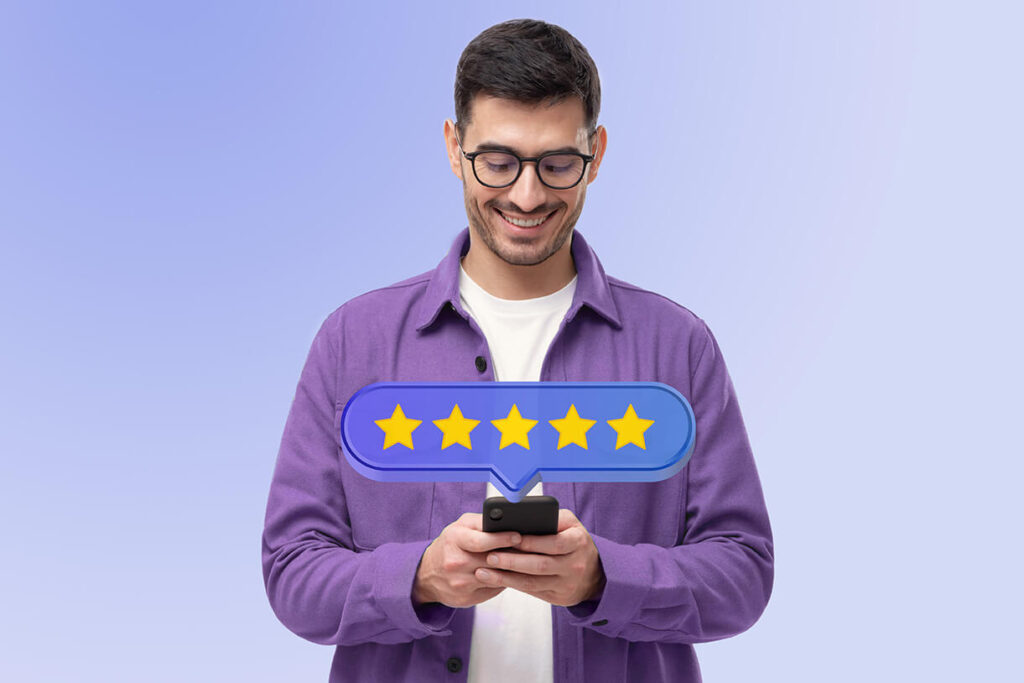
The customer loyalty landscape is far from static, and brands must stay ahead of the curve to remain successful in 2023 and beyond. Brands have a golden opportunity to foster emotional loyalty by understanding their target customers and leveraging technology to enhance their experiences.
“Younger generations, such as Gen Z, really don’t interact with loyalty in the way that other people have in the past, and this trend is really influencing all of us. Especially prevalent in this aspect is personalization and relationship marketing. Brands need to REALLY understand their members and tailor comms to their needs, likes and previous behaviors,” shares Tom Peace, Managing Director of The Loyalty People.
“Understanding the customer is important for success not just today, but all the time. And the basics of loyalty have not changed. The goal has always been to engage the customer and meet or exceed their expectations, so they choose you instead of your competitor. Now we’re seeing that consumer expectations have changed dramatically—and we need to keep up. Before, we were comparing one loyalty program to another. Now it’s about the consumer experience with other brands as a whole,” according to Sandra Gudat, CEO, Customer Communications Group.
Loyalty is not a one-size-fits-all concept. A successful loyalty program must be an extension of the core brand experience, creating a cohesive and valuable customer relationship built to last. The brands that rise to the challenge will be the ones that thrive in this dynamic and ever-changing landscape.
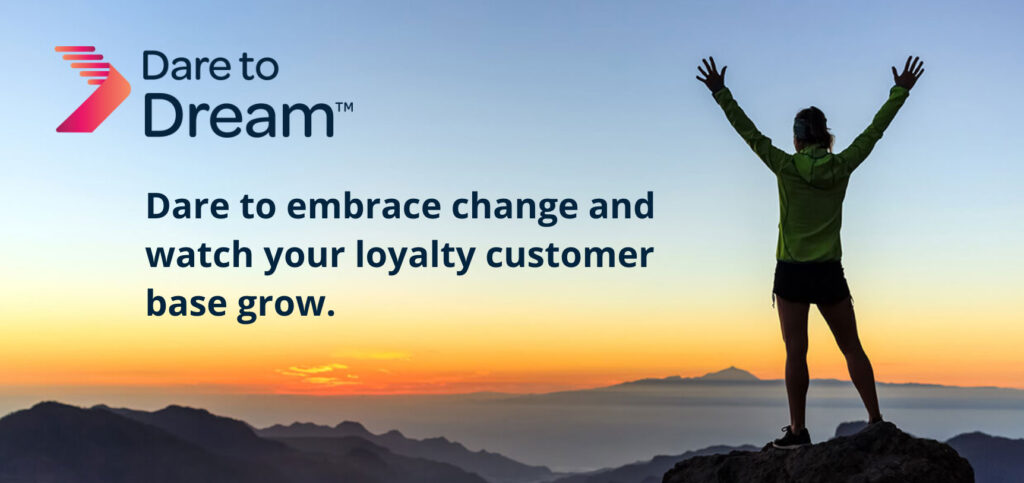
See loyalty in action
Get inspired by the possibilities
Annex Cloud can help
Let’s explore how loyalty can help you become one of your customers’ most beloved brands.